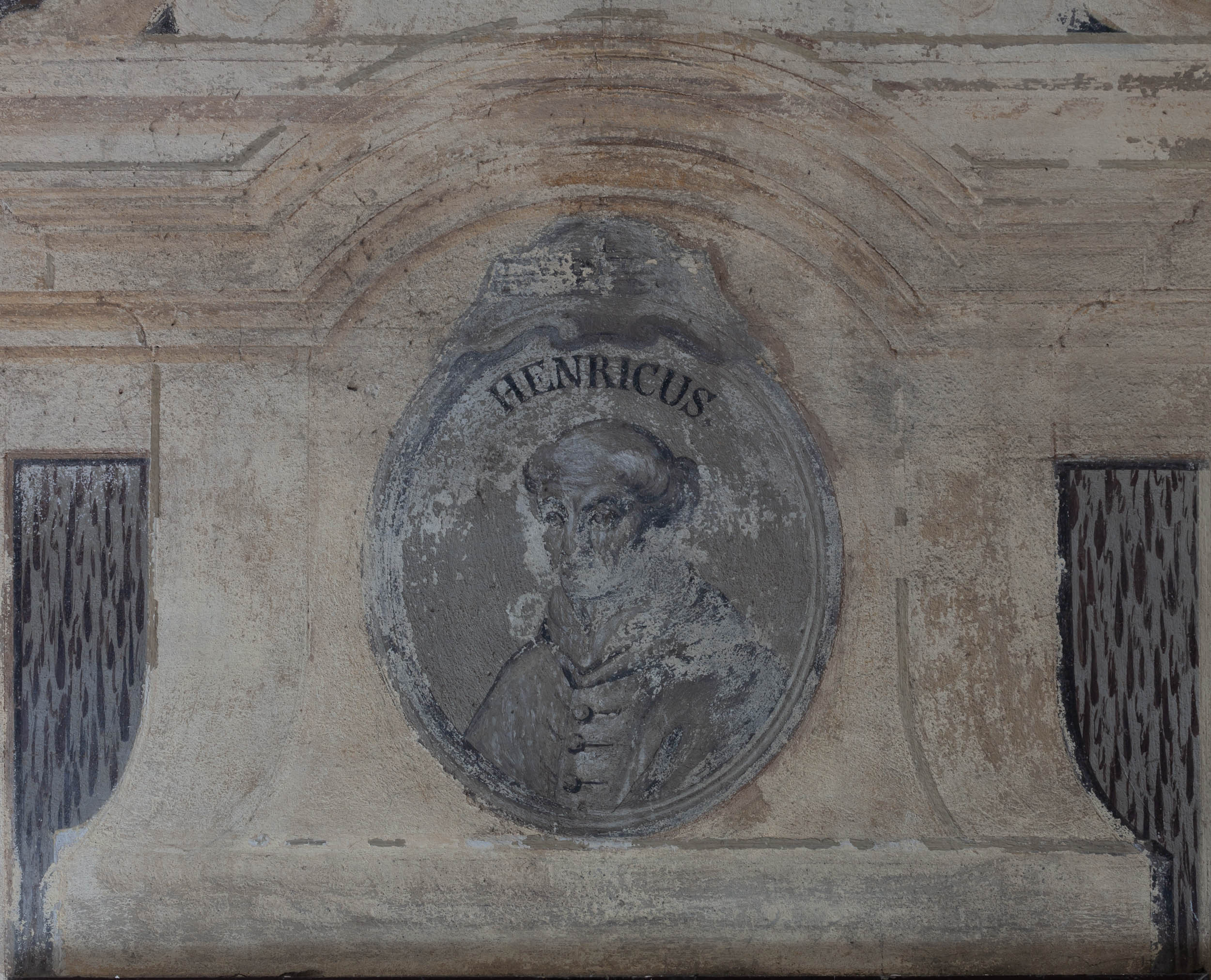
Portrait of Abbot Henry I (Henricus), 1261-1281
- Style
- Baroque
- Date
- 1732-1733
- Material and technique
- Fresco
- Location
- Poaugustinian monastery complex in Żagań, Poland
- Description
- The portrait was originally accompanied by the inscription: 'Qui fuit ex Arois Clero primus Neocastri / Praefuit Hedwigis Conjuge dante locum'. He was a native of Arrouaise in France. He headed the order in Nowogród Bobrzański, where the monastery was founded thanks to the husband of St Jadwiga Śląska (died 1243, canonised 1267). The fresco decoration of the corridor consists of en graisaille bust representations of the abbots of the Augustinian monastery in Żagań, painted decorative vases and colourful rosettes and acanthus on the vaulted walls. The portraits of the abbots are arranged from the doorway on the west side of the tract to the end of the east wing. Framed in decorative borders, they were painted on the lisens and supra-ports, which projected and exposed them in the corridor space. Two abbots were specially honoured by having their images placed in painted epitaphs with an elaborate inscription, now illegible. A large crucifix was made between the epitaphs. All the painted busts were framed by illusionistic cartouches. The best-preserved frames around the image of Abbot Christoph Mechil give an idea of what they looked like at the time. The cartouches were inscribed with fragmentary preserved inscriptions, which consisted of two parts: at the top was the abbot's name with the period of his rule, and below it a two-line poem mentioning his most important achievements. The images of the abbots and the cartouches were designed in monochrome to give the illusion of relief, while the decorative elements in the form of the tombstone epitaph vases were also intended to have illusionistic effects.